Why Train Your Dog?
Besides helping to manage behavior problems, training can help you and your family build a better relationship with your dog! Our goal is to teach dogs good manners and habits and to help prevent bad ones before they begin. With improved training, you’ll enjoy your dog more at home, be able to take your dog more places, and enjoy more activities with your dog.
How Do We Train at Puppy Love?
All dog trainers are NOT the same! Puppy Love Training was founded on the principles of making training fun, easy, and effective for people and for dogs using positive reinforcement clicker training. Our trainers are focused on your needs, goals, and helping you and your dog understand positive reinforcement training!
Training Tip: Train Your Dog Like A Pro!
Here’s a few quick excerpts from Jean Donaldson’s Train Your Dog Like A Pro (2010) to guide you in your training endeavors! Our instructors follow these principles in their own training, their classes at Puppy Love, and private lessons/behavioral consults. Following a set “plan” for training, helping your dog truly understand the behavior, and making training fun and engaging are key aspects to successful dog training.
1. Make Training Fun!
“Trainers [are] especially good at setting the level of difficulty; escalating so that progress was constant but easy enough that the dog won enough to stay in the game… trainers were relentless. Their eyes never left the dog, and they did repetition after repetition.” (p1-2)
It’s very important to constantly engage your dog and make the training game valuable! Set your dog up for success, have fun, and celebrate your achievements no matter how seemingly insignificant. The positive association of rewards (treats, toys, praise, etc) and new behavior creates an emotional response for your dog; training becomes a fun game they want to play with you!
2. Train Like Your Instructor!
“There’s a saying in professional dog training: “It’s all tricks.” What this means is that although we classify sit, down, etc. as obedience and rolling over and high-five as tricks, the nuts and bolts of training these behaviors do not differ in the slightest. From a dog’s perspective, sitting and rolling over are equally arbitrary actions.” (p45)
Once your dog has learned the training game, the sky is the limit! Puppy Love instructors and students have dogs excelling in herding, search and rescue, agility, barn hunt, obedience, rally, and so much more! We enjoy teaching all of our students how to achieve success and really understand positive reinforcement methods and skills to be used for a lifetime foundation to dog training!
3. Have A Plan!
‘Many trainers use their judgement to decide when to make things harder (raising criteria), but I strongly recommend being more systematic and using rules to decide when to make it harder, when to keep practicing at the current level, and when to back off and make it easier. We’re therefore going to use a system called Push, Drop, Stick.
You are going to do five repetitions in a row of an exercise and keep track of how many of these five your dog does correctly. Based on how he performs on those five repetitions (trials), you will do one of the following:
-
Push
- Dog does behavior correctly 5/5 times.
- Make it harder! Go on to the next level of difficulty. Your dog is proficient at the current level.
-
Drop
- Dog does behavior correctly either 1 or 2 times.
- Make it easier! Drop back down to the previous level of difficulty. Your dog is about to quit! This level is too hard right now.
-
Stick
- Dog does behavior correctly 3 or 4 times.
- Stay at the current level of difficulty and do more repetitions. Your dog is not ready for a Push, but no need to Drop.
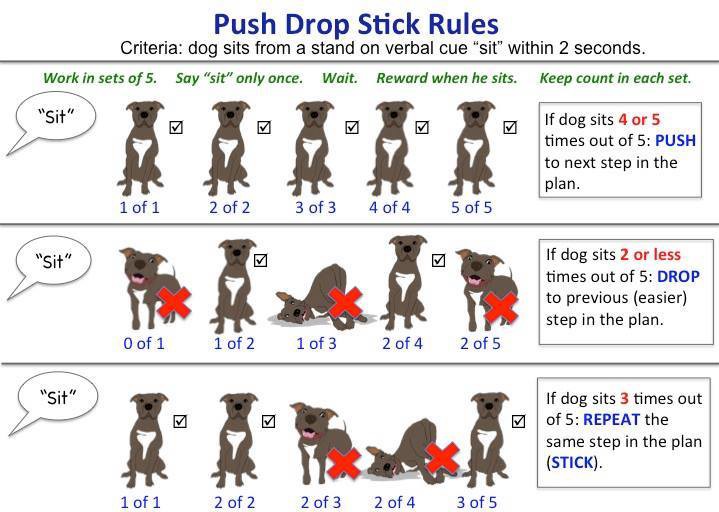
“The important thing is that you use the system. Being organized and objective is good animal training.” (p9-10)
4. Take It On The Road!
‘Taking it on the road is trainer slang for behaviour generalization: can the dog perform for a new person, such as a family member who didn’t participate in the training, and in new places? Dogs are sensitive to these changes, much more so than we are.’ (p93)
Time to test your training! Once your dog is ready to Push to new difficulties after mastering behaviors at home and in class, try training at new places like a park or pet store. We want to gradually add distractions like new smells and sights while training! Approach each distraction with the Push-Drop-Stick method – some distractions might be too hard at first. Most importantly, stay positive and have patience.
5. Be Reflective & Identify Mistakes!
“The most common reason on this earth for being frustrated by slow progress in dog training is poor technique. … Breaking rules because you know what you’re doing appears to be part of human nature.”
Here are the five biggest mistakes of dog training:
- Stinginess with rewards
- Premature Pushing
- Not keeping track
- Skipping steps
- Refusal to Drop
‘…in our cyberspeed world, animal training feels slow. One way people try to speed things up is to increase the level of difficulty as soon as the dog gets something right once or twice.’ (p47)
You show up to work and expect to be paid, right? Your dog should get “paid” with food or toy reward, too! Let them know they’re doing a great job by giving them yummy treats or a fun game of tug-of-war for a job well done, whatever is most rewarding for your dog! Don’t move too fast through steps, follow the system, and make the game easier when needed.
For anyone interested in Puppy Love’s training philosophy and our instructors expertise, visit our Our Methods or Our Staff pages. There’s a reason we have been in business for 22 years; we treat people AND dogs with kindness and respect.
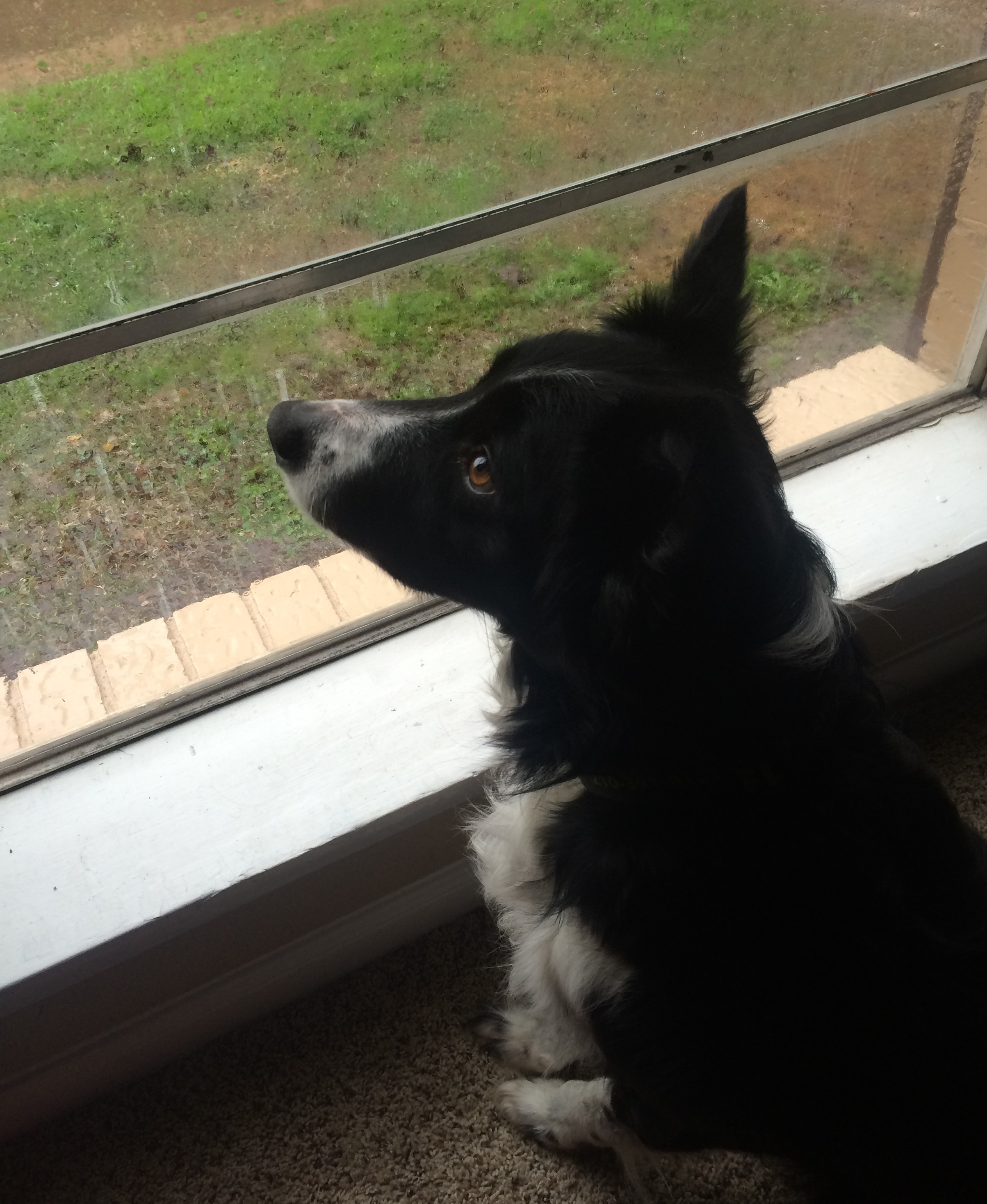 With such gloomy, rainy weather it can be difficult to give our dogs proper mental and physical stimulation. Both of my Border Collies, Fly and Rey, are itching to get outside and play! Though they would be content playing in the mud puddles, the weather simply isn’t ideal for training outdoors. Here are few tips to get you into training mode and give you and your pets something to do while stuck inside!
With such gloomy, rainy weather it can be difficult to give our dogs proper mental and physical stimulation. Both of my Border Collies, Fly and Rey, are itching to get outside and play! Though they would be content playing in the mud puddles, the weather simply isn’t ideal for training outdoors. Here are few tips to get you into training mode and give you and your pets something to do while stuck inside!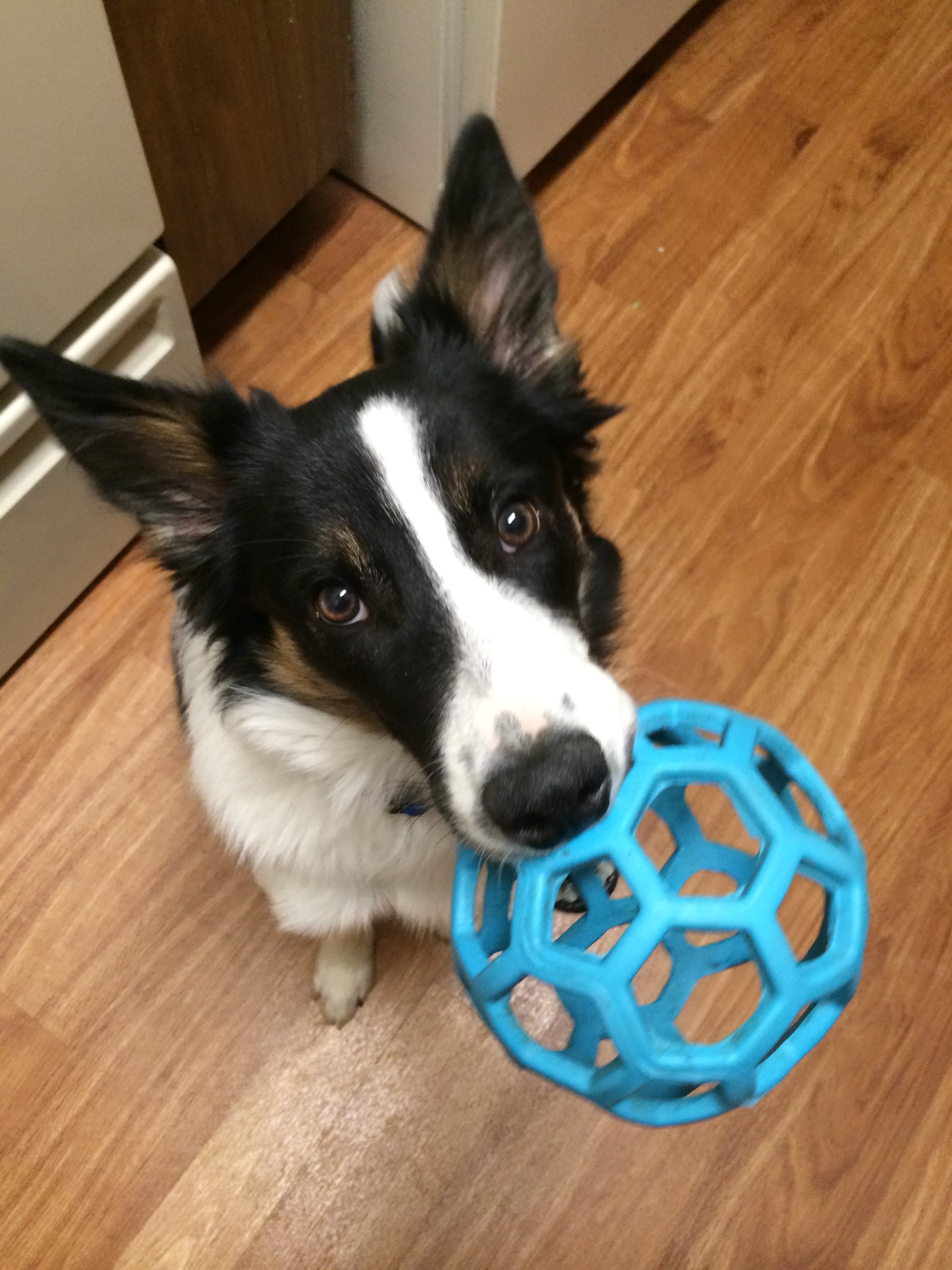
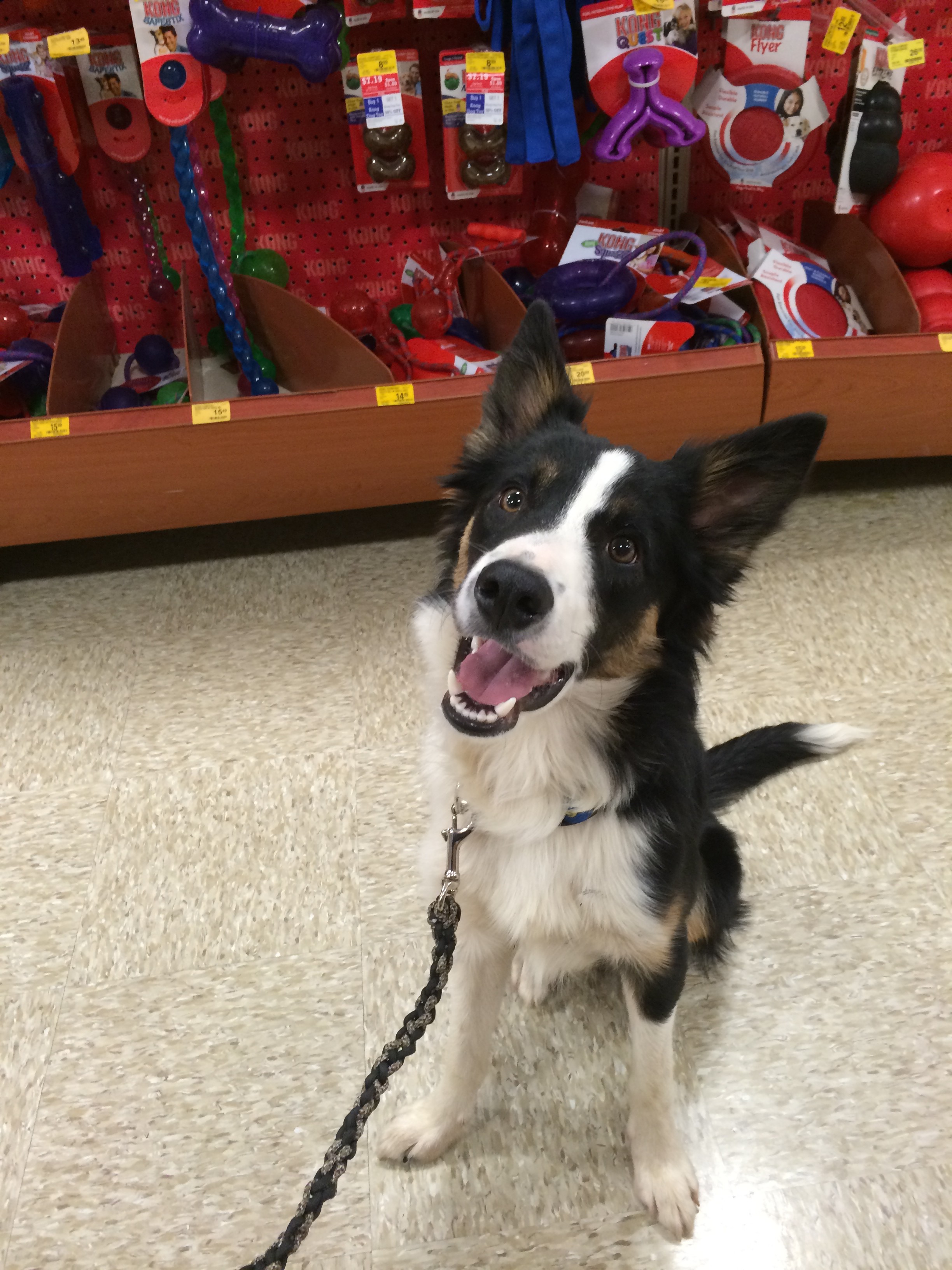


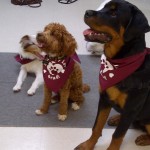
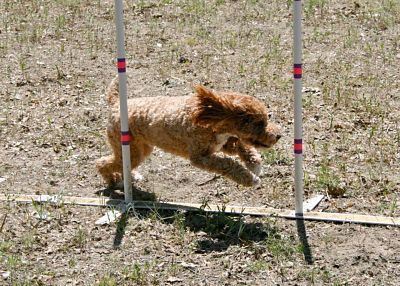


You must be logged in to post a comment.